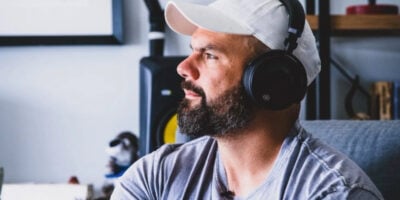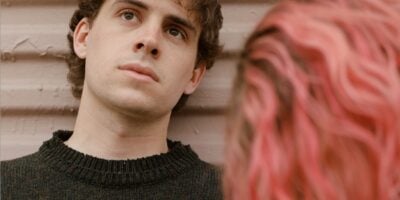Music is littered with unexpected pairings. Remember Aerosmith and Run DMC? Who hasn’t tried to forget Metallica and Lou Reed?
Bizarre combinations aren’t limited to the studio though, and there’s been many truly unbelievable concert lineups. The type that makes you wonder what it would have been like to witness it first-hand (and question whether you hadn’t just hallucinated it all afterwards).
Booking a tour lineup is also a fraught business. Think about it: choose a support act too small and your crowd might be in an underwhelmed mood by the time you take to the stage; book a band too different to you and run the risk of alienating the audience; or worse, choose a youthful superstar-in-the-making and see yourself overshadowed. The nerve of such a young usurper, the absolute gall.
One such tale makes up part of Glasgow’s rich musical history. In 1993, a cocky young band from Manchester, all swagger and bravado, phoned a gig promoter (one Geoff Ellis) and asked to play on his bill at the venue King Tut’s that night.
So Oasis were placed under three other bands (Boyfriend, 18 Wheeler, and Sister Lovers) but it was the new boys who impressed the most. The watching Alan McGee, co-founder of Creation Records, offered them a recording contract, despite their lowly position.
A fraught business indeed. We’ve scoured the history books and discovered some other intriguing concert selections. Take a look at our list of 5 of the most unexpected concert pairings in history, including two contrasting icons of the 60’s finding middle ground and two experimental hip-hop and pop artists creating a feverish performance.
The Clash And Grandmaster Flash And The Furious Five
Despite their obvious genre differences, these two outfits were united by their left-leaning musical consciousness. Led by Joe Strummer, the British punks were outspoken critics of both monarchy and aristocracy. They were a bright light in the darkness of ‘Thatcherism’.
Love Music?
Get your daily dose of metal, rock, indie, pop, and everything else in between.
Grandmaster Flash and the Furious Five’s ‘The Message’ was one of the first examples of hip-hop being used for social commentary: “It’s like a jungle sometimes / It makes me wonder how I keep from goin’ under,” they said as rap moved out of the house parties and started raising awareness of the problems of inner-city life (something The Clash similarly did on ‘London’s Burning’).
In 1981, The Clash personally selected the New Yorkers to open their show but, according to The New York Times, they unfortunately weren’t received well from an expectant crowd.

Beastie Boys And Madonna
This unlikely partnership actually lasted for an entire 1985 tour. Both were MTV favourites in the mid 80’s but shared few similar sonic traits. The brash and humorous hip-hop the Beastie Boys indulged in was simply never going to be accepted by the predominantly youthful female audience following popstar Madonna.
The 1985 tour was especially significant, marking Madonna’s transition from CBGB to superstardom and supersized arenas; if the Beastie Boys had toured with her even a little earlier, they would have been fine. To Madonna’s credit, she fought her management to allow the trio to remain on the tour and finish it. The group’s Ad-Rock summed it up best when discussing their experience with her crowd: “We hated them. They hated us. It was like love.”
https://www.youtube.com/watch?v=alZw2eESeyg
Death Grips And Bjork
What a ferocious and chaotic pairing. The esoteric hip-hop crew Death Grips opened for the Icelandic queen of surreal pop in Toronto in 2013. It’s possible to classify both artist’s music as avant-garde and experimental but Bjork’s art pop lacked the harshness and roughness of Death Grips’ hardcore and industrial style.
Bjork was also a far bigger performer than Death Grips, the latter favouring the underground scene. Yet it worked out, so much so that Bjork appeared on all eight tracks on the first half of Death Grips’ 2015 double album, The Powers That B.

Simon And Garfunkel And The Doors
They were the delightfully harmonising natural successors to The Everly Brothers; their support were the confrontational rockers with a frontman who went by the moniker ‘The Lizard King’. Simon And Garfunkel and The Doors performed together at Forest Hills Tennis Stadium in 1967, right in the centre of their careers.
The folk rock duo had released two albums the previous year, Sounds of Silence and Parsley, Sage, Rosemary and Thyme, both of which went triple platinum in the U.S.. The Doors released their self-titled album in 1967, one of the greatest debut records of all time, containing hits like ‘Light My Fire’.
It wouldn’t be a straightforward concert with Jim Morrison around and his band made a late entrance after losing their equipment. Things got better after that, in what was undoubtedly one of those “I was there” concerts.

Radiohead And Alanis Morissette
Two defining artists of the alternative rock scene of the 90’s performed together at differing stages of their careers. In 1996, Morissette’s tour was in support of her huge breakout album Jagged Little Pill, a chart-topper and zeitgeist-record. During this year, though, Radiohead were still rising, the classic OK Computer having not yet been released (it would change the musical landscape in 1997).
“My main memory of that tour is playing interminable hand-organ solos to an audience full of quietly despairing teenage girls,” said the band’s guitarist Jonny Greenwood in an interview with Rolling Stone 20 years later. ‘You Oughta Know’ that Morissette’s crowd would be a difficult one to win over, Jonny.
Instead of trying to win over the young fans though, Radiohead honed their unique brand of melancholic rock by testing out songs that would soon define the band, such as ‘Karma Police’ and ‘Paranoid Android’. “We were well adept at playing to people that didn’t give a rat’s ass about us,” frontman Thom Yorke said. “I used to quite enjoy it. People are sitting down to their chicken dinners. We were trying to get them to choke on the bones.”


































